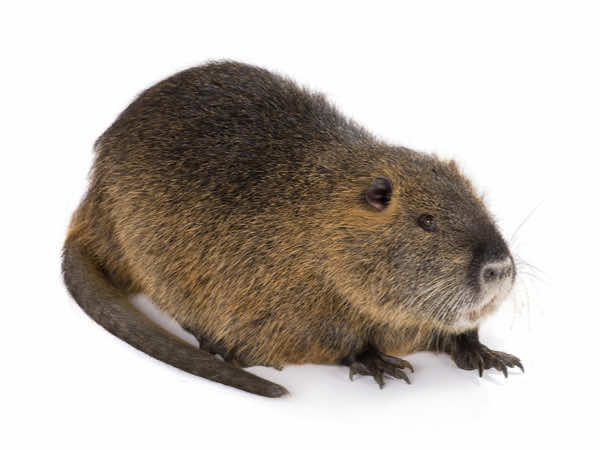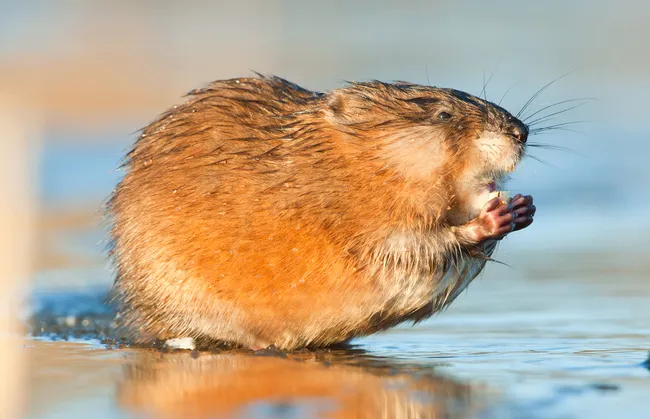Muskrats

Wikipeadia page for Muskrats

| Animal Name | Description | Habitat | What they eat | What they do | Facts | Picture |
|---|---|---|---|---|---|---|
| Muskrat | A medium-sized rodent with a large head, stocky body, short legs, and a scaly, vertically flattened tail that is slightly shorter than the total body length. The dense, glossy fur on the back is blackish-brown with lighter brown (sometimes reddish or yellowish tinged) on the sides. Undercoat is paler and the throat is white. Eyes and ears are small and a black spot occurs on the chin. The larger hind feet are partially webbed. | Muskrat habitats include both freshwater and brackish water including coastal marshes, marshy areas within ponds, lakes, sloughs, ditches, streams, canals, water storage areas, strip-mined pits, borrow pits along highways and other aquatic habitats. | Muskrats are basically herbivorous. They feed mainly on aquatic plants such as the roots and stems of cattails, lilies, sedges, and grasses. They may occasionally eat mussels, shrimp, and small fish. | Though thought of as pests because they sometimes eat crops and block waterways with their lodges, muskrats are very helpful. By eating aquatic plants, they open other areas of the waterways, giving ducks and other birds clear places to swim. Their lodges are also used by other animals as resting areas and nests. | Length: 16.0 - 25.3 inches Tail: 7.0 - 11.5 inches Ears: 0.8 - 1.0 inches Weight: 1.5 - 4.0 pounds |  |